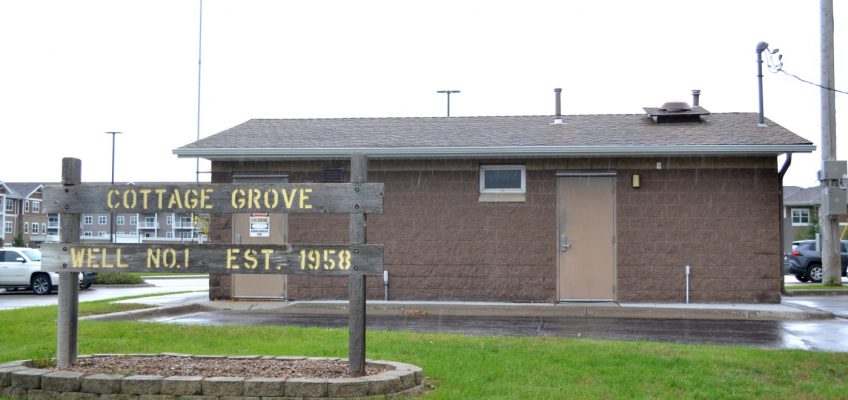The city of Cottage Grove recently broke ground on its largest infrastructure project to date: a $39 million low-zone water-treatment plant at the intersection of 110th Street and Ideal Avenue.
The new plant, which includes a new city well, will treat all the water in the city south of U.S. Highway 61, said Ryan Burfeind, the city’s public works director. It is expected to be operational by June 2025.
The new well will replace two wells contaminated with per- and polyfluoroalkyl (PFAS) “that are far removed from the main treatment plant,” Burfeind said. “It’s actually cheaper to drill a new well as opposed to laying miles and miles of pipe.”
The money for the construction of the plant is coming from the city’s share of the $850 million settlement reached in 2018 between the state of Minnesota and 3M Co., the company that made the PFAS substances that have leaked into water supplies across the metro area and worldwide.
The groundbreaking “signaled the start of the permanent solution, long-term solution to provide treated water for generations to come,” Burfeind said. “It was a very important day.”
Cottage Grove previously built five temporary treatment plants to handle the contaminated water, connected 183 homes to the public water system and laid almost 9 miles of pipes to make connections for clean water for a total cost of $37 million, Burfeind said.
“We’ve always had that commitment to provide safe drinking water, and we provide it now with the temporary plants,” he said. “Those are very important with our current operations, but this is our permanent solution.”
The city next year will begin construction on a permanent water-treatment plant that will treat all city water north of U.S. Highway 61, Burfeind said. That plant, designed to treat three times as much water as the plant south of U.S. 61, will be located behind the city’s Central Fire Station on 80th Street, according to Burfeind.
A cost estimate is not yet available, he said.
Mayor Myron Bailey at the groundbreaking shared that the city has been at the epicenter of the PFAS contamination in Minnesota since 2006. Residents have waited years for permanent drinking water facilities to be constructed, he said.
Bailey thanked the co-trustees of the 3M Settlement, the Minnesota Pollution Control Agency and the Minnesota Department of Natural Resources for their partnership on developing the conceptual drinking water supply plan. “Their leadership throughout this process has been key to making projects such as this treatment plant a reality,” he said.
Related Articles
It’s been a century of learning and friendship for the Friday Study Club in Stillwater
22 dogs seized from Andover rescue organization in investigation into dead dogs found in Cottage Grove
Historic Courthouse in Stillwater getting a major makeover
Eights dogs found in Cottage Grove died outside city, officials say
Cottage Grove: Animal-cruelty investigation underway after eight dogs found dead
Bailey also noted that the Minnesota Department of Health has been a key partner for the community through their work in providing information on the evolving science and education of PFAS.
The Maplewood-based 3M Co. began making PFAS at a facility in Cottage Grove in the 1940s and historically disposed of PFAS wastes in four east-metro locations, the source of identified PFAS impacts in Washington County groundwater.
PFAS, also known as “forever chemicals,” do not break down in the environment and can build up in the human body, according to the Minnesota Department of Health. Immediate risks are believed to be low, but long-term exposure to the chemicals can result in immune suppression, changes in liver function and lower birth weight, according to state officials.


Leave a Reply